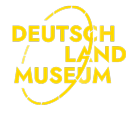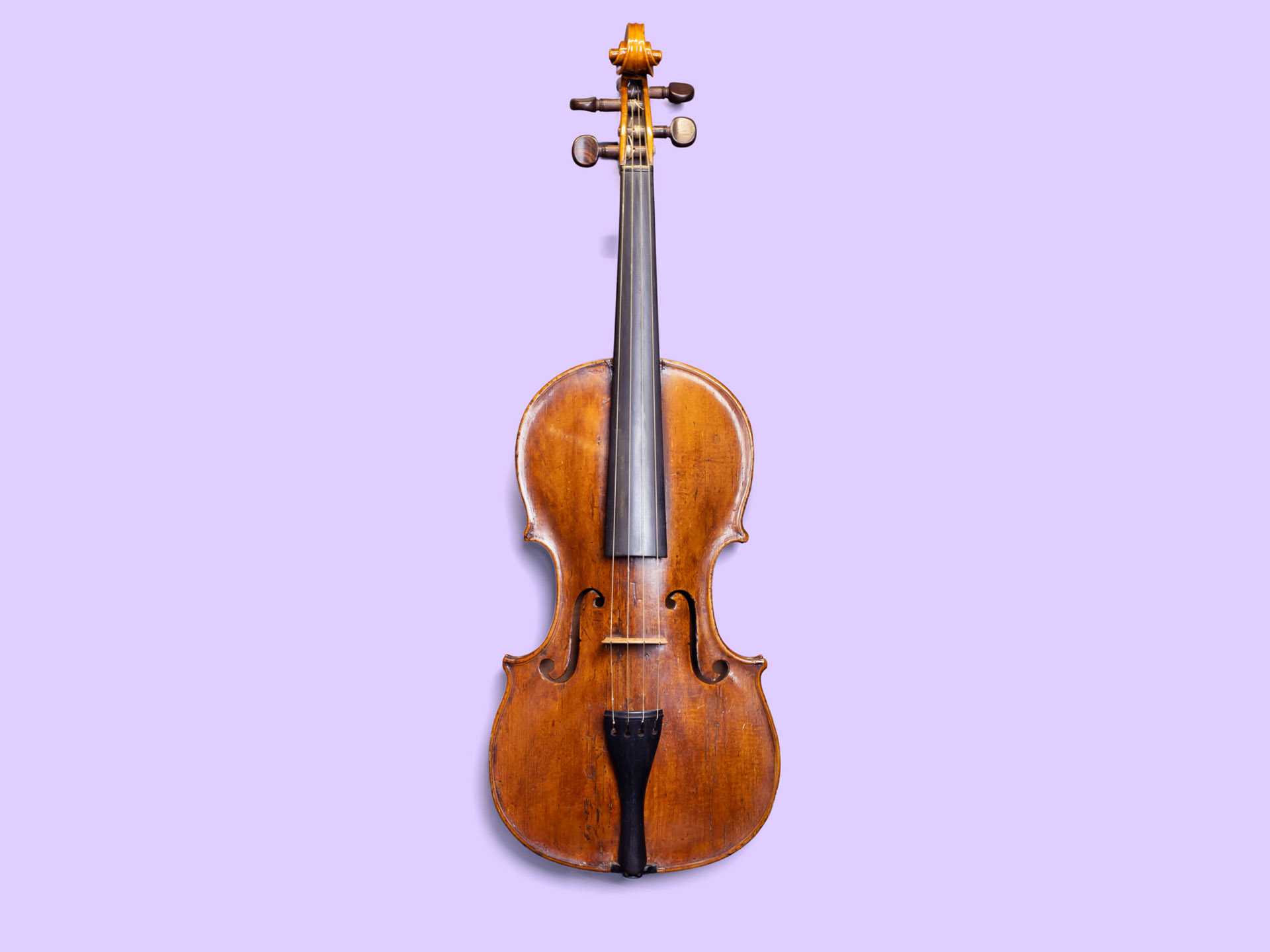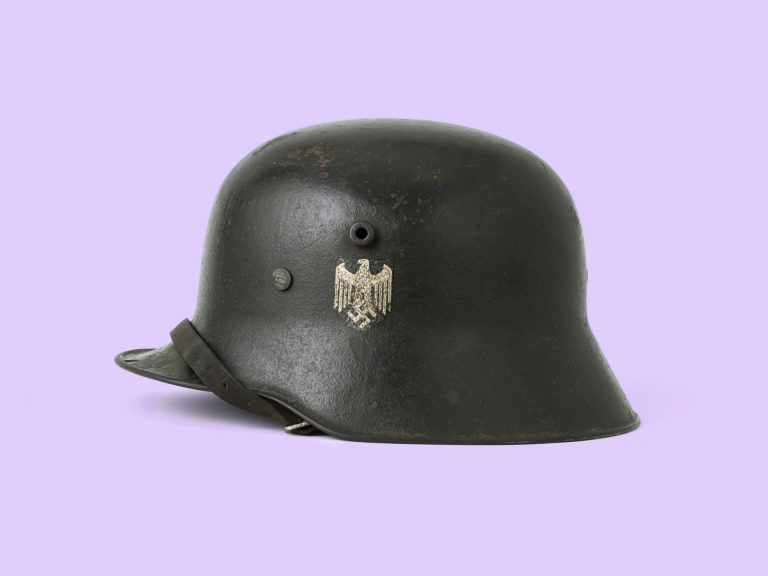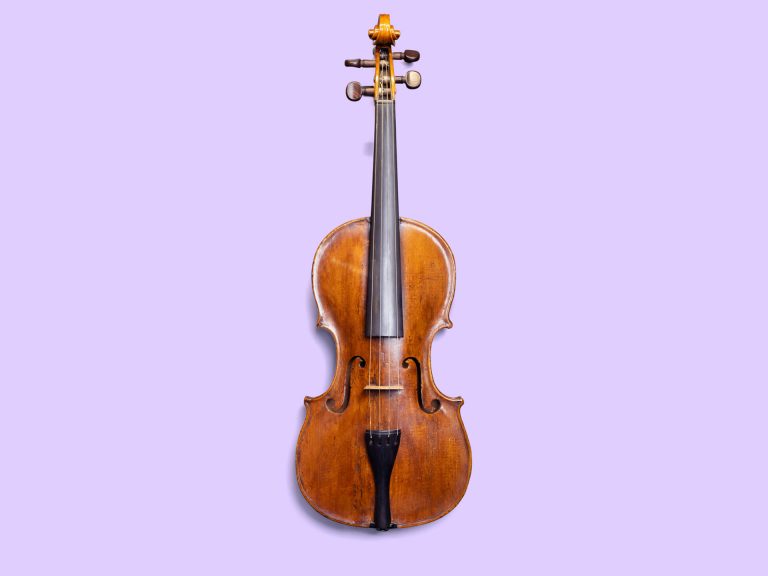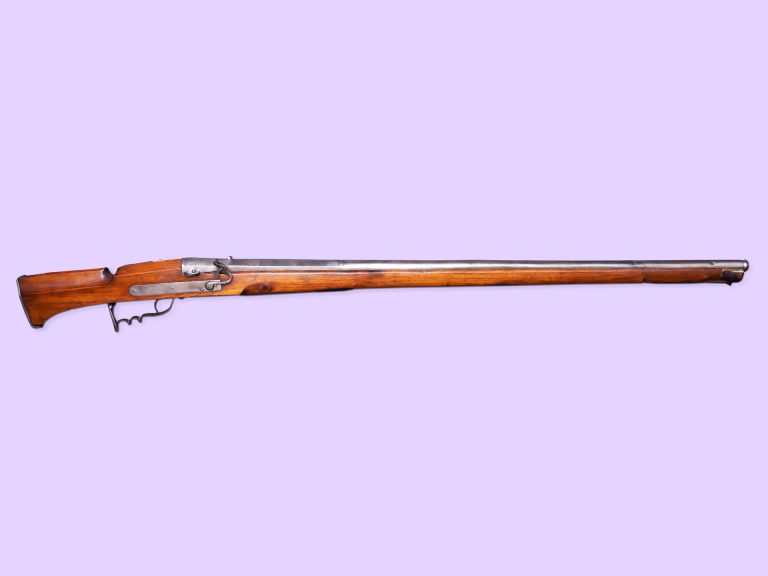The Ficker dynasty: generations of master violin makers
Johann Christian Ficker III (1758 – 1822) is regarded as one of the most skilful amongst the long line of master violin makers produced by the Ficker family. The craft of violin making was passed down within the family over several generations and some 20 members of the Ficker family worked as instrument makers, starting with Johann Christian Ficker I (1690 – 1726). In 1800, as many as six members of the family were working as instrument makers in Markneukirchen. The last violin maker from the Ficker family died in 1942.
The violin on display in the Deutschlandmuseum was made by Johann Christian Ficker III around 1780. The wood of the sound box was branded with * I * C * F * to mark its provenance.
The features of a Ficker violin
Ficker violins were often modelled on those from the important 17th century Tyrolean violin maker Jakob Stainer. Stainer used a characteristic design which differed markedly from his famous Italian counterparts like Antonio Stradivari. The pronounced curvature of the top and back plates of Stainer’s instruments meant a shorter, wider instrument than those produced by the Italians, whilst Stainer incorporated short, vertical f holes.
The back plate, ribs and scroll of the violin on display in the Deutschlandmuseum are made of European maple, while the top plate is realized in European spruce. The high-quality workmanship of Ficker’s violins, their warm, resonant sound, and their volume meant that they were in high demand across Europe.
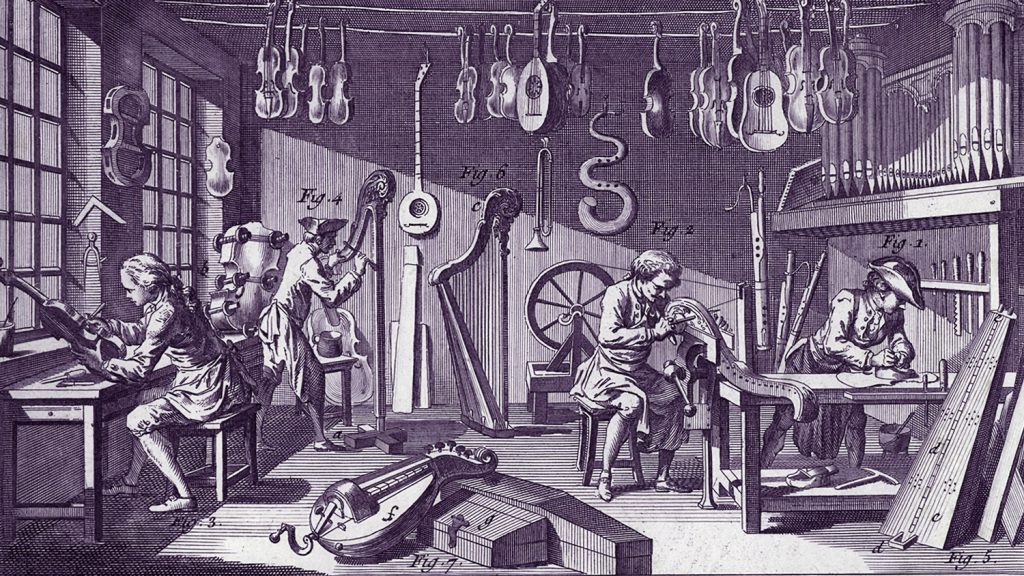
View into the workshop of an 18th century
violin and instrument maker Engraving, Encyclopédie, Diderot et d’Alembert, Besnar Robert, Planches tome V, 1767 (Source: Wikimedia Commons)
Marktneukirchen and the Vogtland as a centre of German musical instrument manufacturing
The workshops of the Ficker family were located in Marktneukirchen. Hosting a concentration of well-known master instrument makers, the town and the surrounding area developed a reputation as the centre of German instrument making from the middle of the 17th century.
In addition to violins, other instruments such as guitars, zithers, woodwind instruments, French horns and harmonicas were also made in the area. The guild of master violin makers formed in this area can be traced back to 1677. With international demand for instruments made in the area around Marktneukirchen, the industry is an important part of the regional economy to this day.
Property information
Designation
- Date c. 1780
- Gallery The Enlightenment
- Category Art&Culture
- Origin Germany
- Dimensions 23x59x7 cm (WxHxD)
- Material horn, wood
Property information
Designation
- Datierung c. 1780
- Epochenraum The Enlightenment
- Kategorie Art&Culture
- Herkunft Germany
- Dimensionen 23x59x7 cm (WxHxD)
- Material horn, wood

About the Deutschlandmuseum
An immersive and innovative experience museum about 2000 years of German history
Reading tips and links
Lifesaver? The German Steel Helmet in the First World War
German Tank Museum Munster
Lifesaver? The German Steel Helmet in the First World War
German Tank Museum Munster
Share article
Other objects in this collection
Discover history
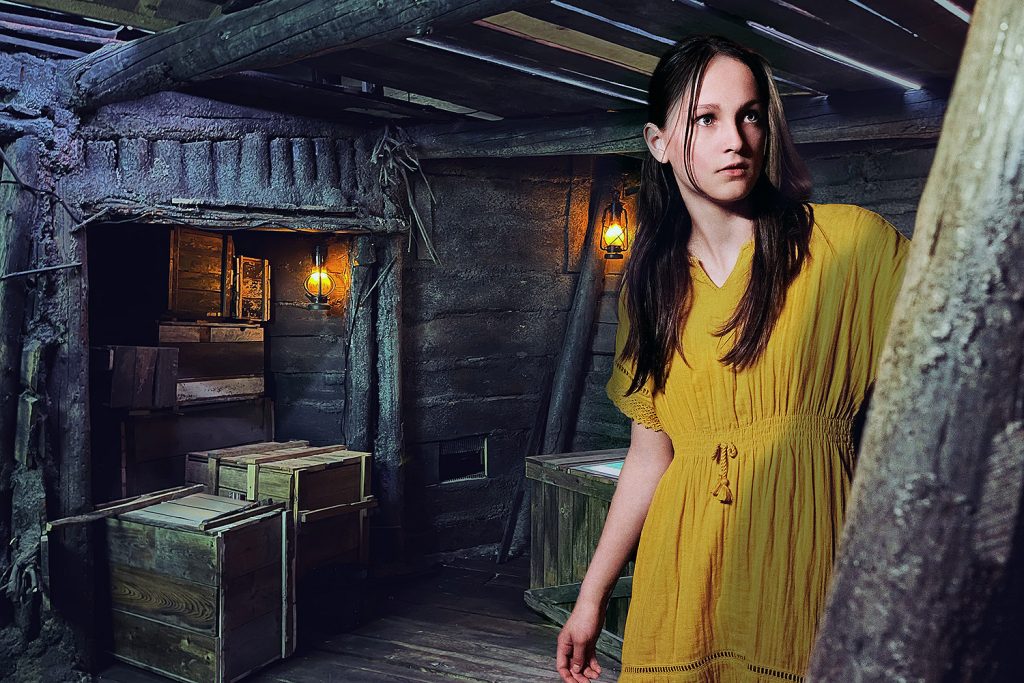
Visit the unique Deutschlandmuseum and experience immersive history
2000 Jahre
12 Epochen
1 Stunde
